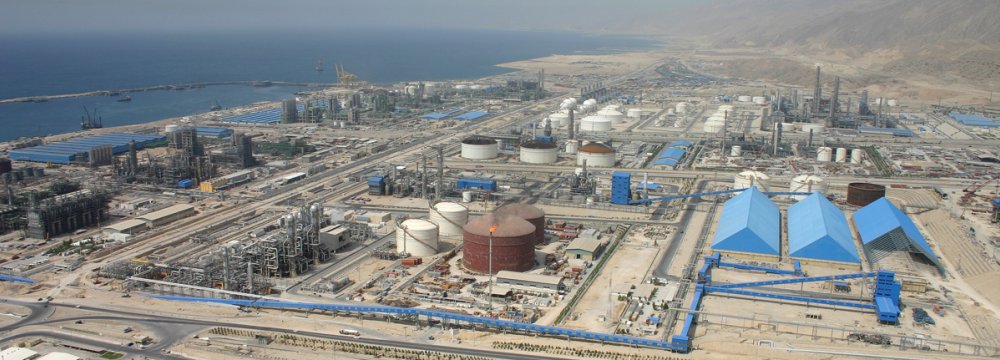Some of the biggest European energy companies are looking at petrochemical investment opportunities in the Parsian Special Economic Energy Zone, an emerging hotspot for industries in the southern Hormozgan Province in the Persian Gulf.
"Household European names, such as Total, BASF and Royal Dutch Shell, are interested in investing in the Parsian Special Economic Energy Zone," Hassan Shahrokhi, the zone's managing director said, ISNA reported Wednesday.
He made the statement on the sidelines of an agreement signing ceremony between the National Petrochemical Company and the Iranian Mines and Mining Industries Development and Renovation Organization (IMIDRO) for facilitating investment in the special zone.
Domestic and privately-owned companies have already pledged to spend up to $10 billion in Parsian zone which is emerging as a hub for petrochemical, steel and aluminum industries, the news agency quoted him as saying.
Parsian energy zone should not be confused with the Pars Special Economic Energy Zone (PSEEZ) southeast of Bushehr Province which is home to major oil, gas and petrochemical facilities.
"Around $40 billion in investment is required to develop the industrial zone," Shahrokhi noted.
Germany's BASF has held negotiations for a $6-billion petrochemical project in south Iran. But it is unclear how serious the world's largest chemical producer is about its petrochemical ambitions as chief executive officer Kurt Bock said in February that talks with Tehran "were limited to investments in oil and gas exploration and production."
Shell, which last year signed a memorandum of understanding with NPC on expanding cooperation, is still exploring its options on collaborating with Iran.
French energy giant Total has also discussed the construction of two petrochemical units as well as transfer of technology and licenses to produce polymers.
--- Parsian Project
The development of the energy zone is imperative to fulfilling Iran's wish to expand the petrochemical industry.
Nominal petrochemical production reached 62 million tons in the previous fiscal year (ended in March). Tehran hopes to more than double output in five years by attracting $70 billion in investment.
It aims to establish new plants in the Parsian zone with a total petrochemical output capacity of 18 million tons a year.
Parsian is planned to produce 4 million tons of steel as well as 1.2 million tons of aluminum annually, while power stations with installed capacity of 6,000 megawatts are to be built to meet the needs of the industries.
The energy and industrial zone will receive natural gas feedstock from the giant South Pars field in the Persian Gulf. The zone is aimed at stimulating economic growth in the region and produce higher value-added products from natural gas.
According to published reports, Iran holds the world's second-largest natural gas reserves after Russia.











Add new comment
Read our comment policy before posting your viewpoints